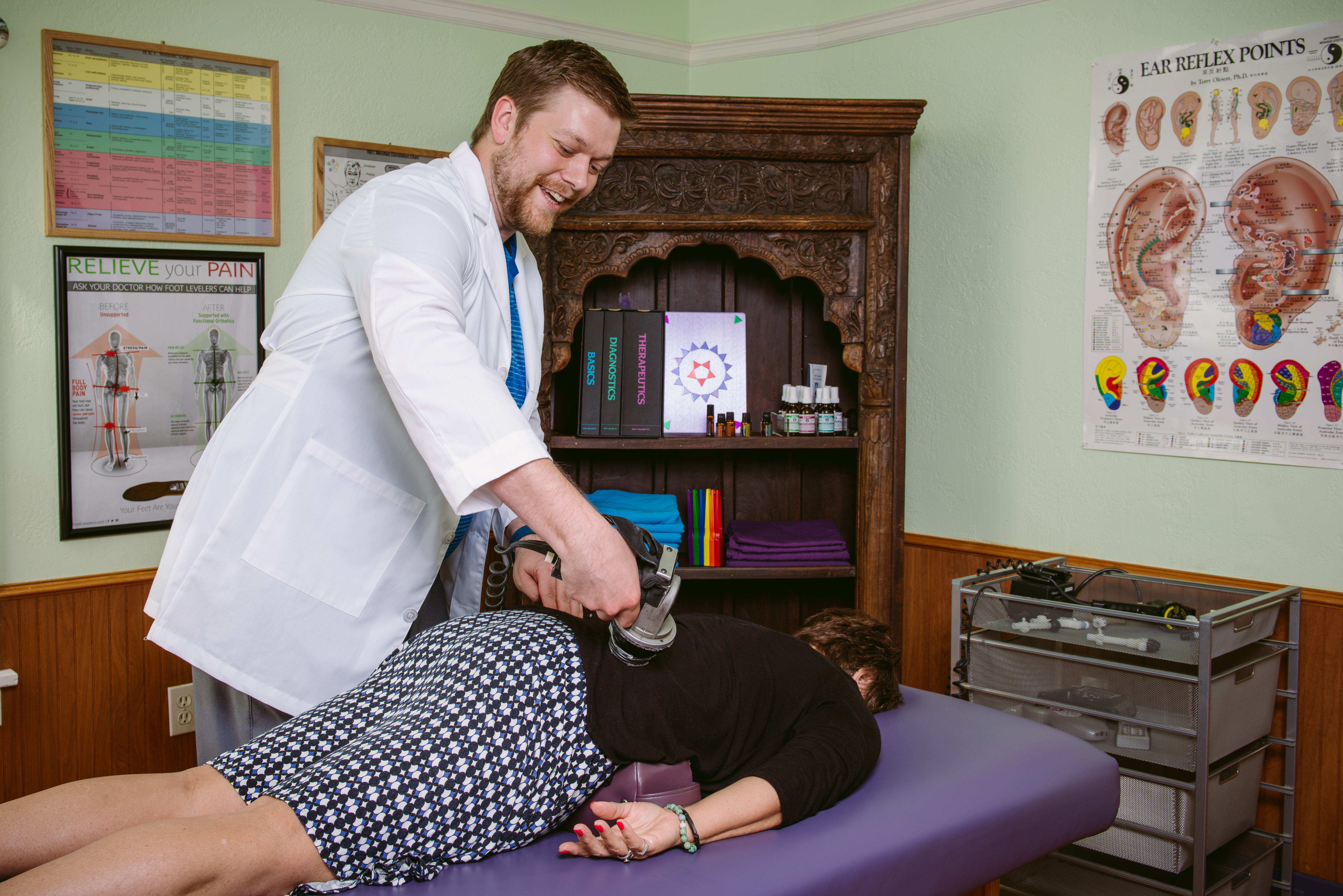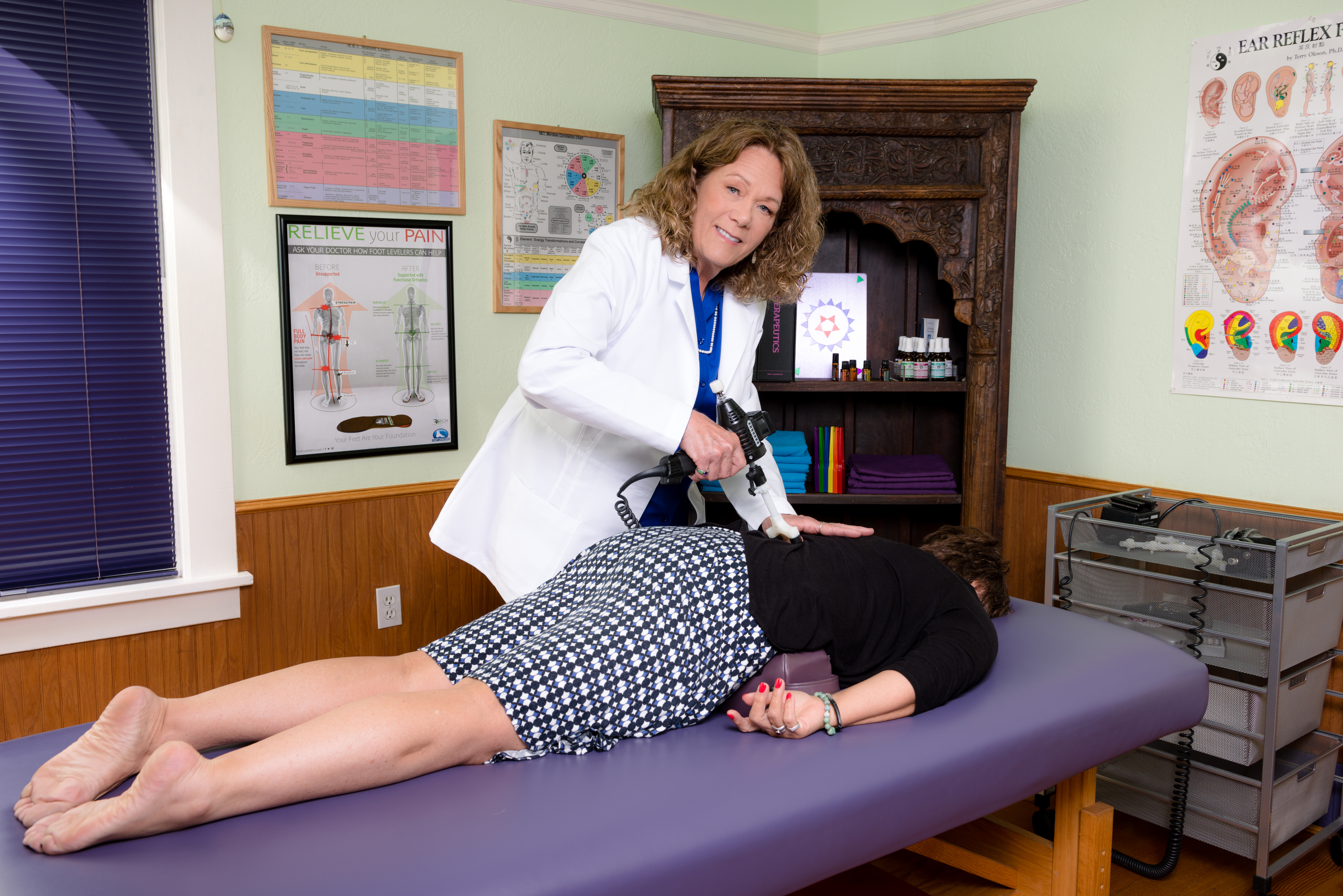Instrument Assisted Adjusting
I use instruments primarily as my preferred method of adjusting vertebra, other bones like knees and elbows, and muscles through trigger point stimulus and to tune up or tone down a muscle that is misbehaving. The instrument allows me to do very lightforce adjusting, to increase the force as needed, while getting direct feedback through the handle and sound as to how tight an area is and how easily it is responding. For very spasmed areas, I can repeat my gentle adjustment several times, using light force, only moving the joint a small amount, and get great relief. The body responds with relief adn relaxation. very forceful, high velocity adjustments stimulate a protective reaction from the body, causing more spasms as a protective reaction, sometimes increased spasms and swelling, and the rest of the body has to adapt and try to find a balance.


My primary tool is called an ARTHROSTIM which I am demonstrating in the photo. I also use a hand-held instrument called an activator, either single or two at a time. With both of these I can very specifically line up the angle of the thrust to get the exact result I want.
I also use a VIBRACUSSOR, a hand-held instrument that relaxes muscles, increases circulation, and even more importantly—releases adhesions where the muscles have become adhered together. Anywhere you have inflammation between muscle bundles, the body secretes an exudate, a fluid that can congeal and glue the muscles together. Each muscle is surrounded by a covering—called a fascial sheath—allowing muscles to contract and glide over each other. When inflammation/injury occur, the fluid that builds up between them gets thick and glues the muscles together. When you try to use a muscle, it can’t move freely and causes pain. This is what happens in a frozen shoulder, chronic tennis elbow, but also with chronic neck and back pain. Rolfing is a way to release these adhesions through deep—and painful—pressure to separate the muscle bundles. The VIBRACUSSOR does this WITHOUT PAIN and more effectively and rapidly. It has an up and down motion which separates the muscle bundles and releases those adhesions. It was developed by an Osteopathic Craniosacral doctor. I saw and heard one of the original instruments demonstrated by Dr. John Brimhall. You could hear the sound of the motor change to a low pitch when it had engaged an adhesion, then the sound would go up in pitch with decreasing resistance as the adhesions were released. I wish the current instruments still had that sound effect!
